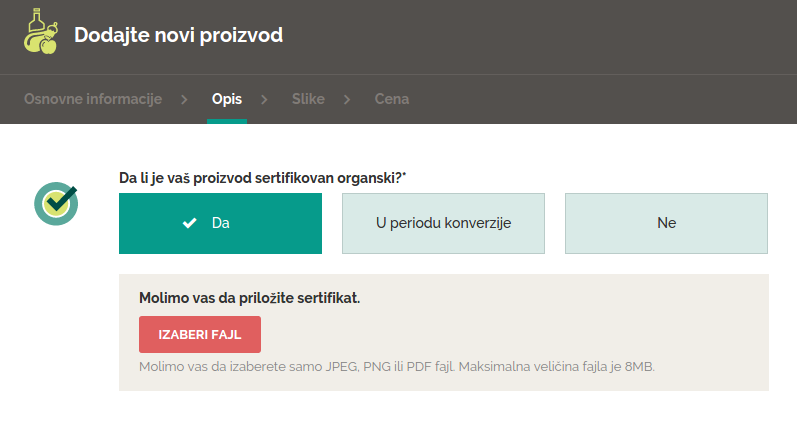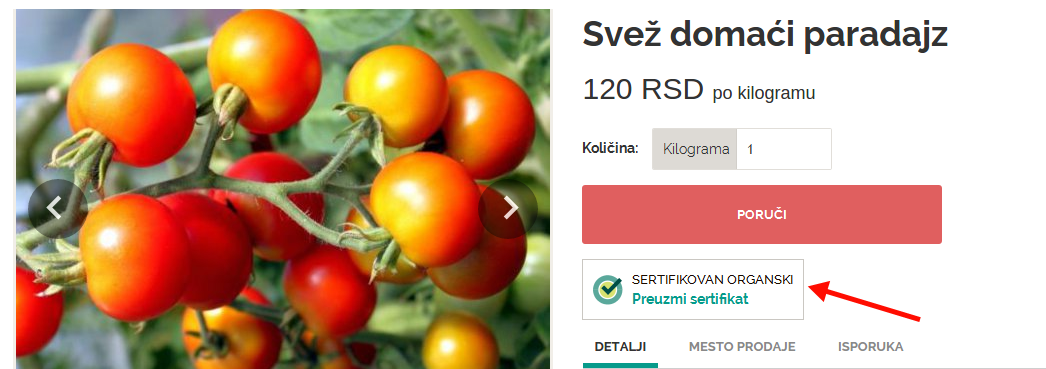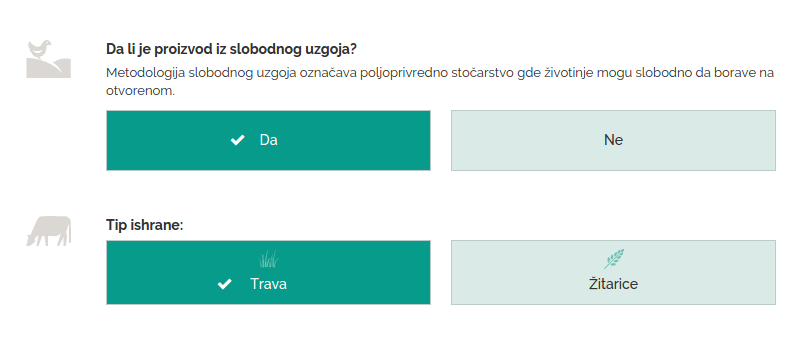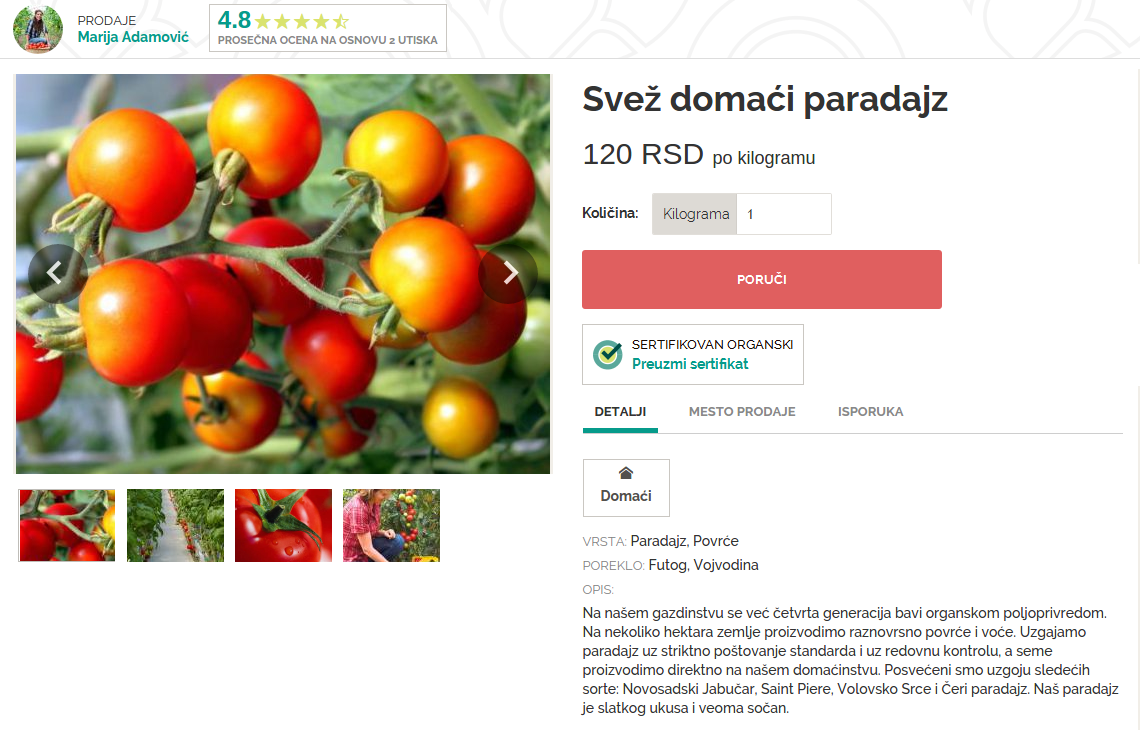How to describe your product
Start from yourself and think more about what you would like to know about the product you are interested in buying.
What information will you be interested in? We can help you with describing your products by asking you a few questions you can simply answer with Yes or No (by selecting the answer):
- Is your product certified organic?
- Is it locally grown? That is, is it produced near the point of sale and not imported from another country or region?

And how can your potential buyer be sure that you are selling certified organic food?
Organic farming is, apart from natural laws, also regulated by state laws.
You can add your organic certificate easily and simply, showing and confirming that your products are controlled and inspected. The certificate is, as we know, the document that confirms the credibility and quality of the products you're selling, and it is certainly one of the most important information for organic food buyers.
Once you add the certificate, you will receive a special badge that clearly shows your products are certified organic. Even more, the buyers can preview and download the certificate.


And what if you are in the process of obtaining the certificate?
You can specify if your product is in the period of conversion, for which you will receive a badge, and will have to add the certificate as well. Products that are not certified organic or not in the period of conversion, will not receive a badge of any kind.
And if you are selling meat and meat products, we’ll ask you the following questions:
- Is it free range?
Free range denotes a method of farming husbandry where the animals can roam freely outdoors.
- How it is fed?

Answer these questions with Yes or No, insert the location of the production (region, country and village name), and you can start describing your product.
How can you best describe the product?
The description has to provide specific details about the food or beverage. This is an example of a good product description that can inspire you to write similarly:
We grow a traditional European variety of deep red and medium-sized strawberries. Our strawberry jam is made in a traditional way, without any artificial and chemical preservatives. The jam (available in 10 oz jars) contains 50% organic strawberries, 30% fructose, natural apple pectin, citric acid and ascorbic acid (vitamin C). No preservatives or artificial colors.
You can add these details as well:
Nutritional values (per 1 Tbsp / 18 g Serving): calories 30, total fat 0g, Sodium 10mg, total carb 8g, sugars 8g, protein 0g, vitamin C 20%. Not a significant source of fat cal, sat fat, trans fat, cholest, fiber, vitamin A, calcium or iron.

If you are selling carrots or other vegetables, this description is a good example:
Vegetable farming has been in our family for over 4 generations. Our organic farm is committed to producing the finest quality fruits and vegetables. We grow organic carrots in strictly controlled conditions, without the use of synthetic fertilizers and pesticides and produce sweet and delicate carrots.
Tip: When describing the products, be as specific as you can. However, if you are in doubt or lack information about the product, be precise and clear about it in your description (this is oftentimes the situation while describing the processed organic produce). You can also include interesting information about your farm or household.
When you click on the button Next, we can start adding Photographs.





